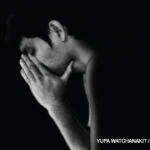At first, there was an incomprehensibly loud explosion. And out of that explosion, about 4.5 billion years afterward, emerged the world’s first rheumatologist. Only a few notable things have happened between these two events, but the most important dynamic has been the continuous expansion of our universe. If the speculations of many cosmologists are correct, this expansion will continue, possibly indefinitely, until we end up in a place where galaxies, stars, and even individual atoms distance themselves and isolate themselves into a cold nothingness.
Certainly, this cosmic distancing is happening at such a slow pace that none of us can feel it occurring. Yet we do feel another shift that is occurring in front of our very eyes. Our society and our healthcare systems are ripping apart at the seams, with entire communities dominated by loneliness and mistrust. However, unlike the expansion of the universe, there is something that we rheumatologists can do. So what is our role in stitching together our world? Let’s rheuminate!
[Editor’s note: Watch Dr. Kumar’s video on this and other topics.]
Loneliness & Rheumatic Disease
Loneliness is an epidemic in American society, with the U.S. Surgeon General acknowledging its widespread nature and its detrimental effects on poor health.1 The data are striking: Loneliness is associated with increased risks of cardiovascular disease, depression, cognitive decline and premature death. In fact, the mortality impact of loneliness is equivalent to smoking about 15 cigarettes a day.
For our patients with rheumatic diseases, the stakes appear even higher. Chronic pain, fatigue and physical limitations can isolate individuals, cutting them off from social networks and leaving them to grapple with their conditions in solitude.2 Further, this loneliness can be even more debilitating in the context of already heightened risks of cardiovascular disease and depression in folks with autoimmune disease.
As rheumatologists, we are uniquely positioned to recognize and address the role loneliness plays in our patients’ health. We are privileged that our field involves long-term relationships with patients. We see them repeatedly over years and decades, monitoring their disease activity and empowering them with tools to regain function. This continuity of care allows us to observe patterns that might otherwise go unnoticed—withdrawal from activities, a shift in mood, or comments about feeling disconnected. Identifying (and documenting) these signs is the first step in addressing loneliness.



